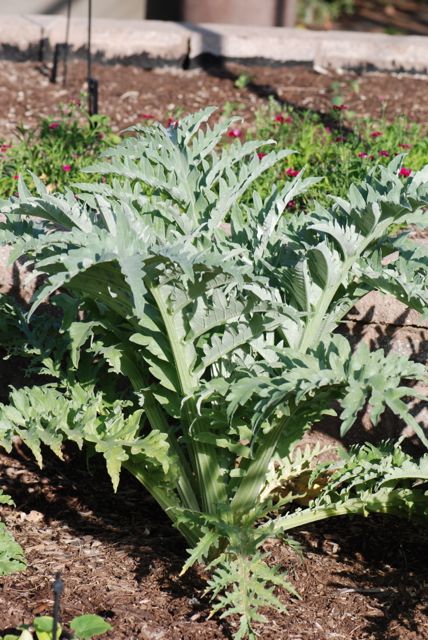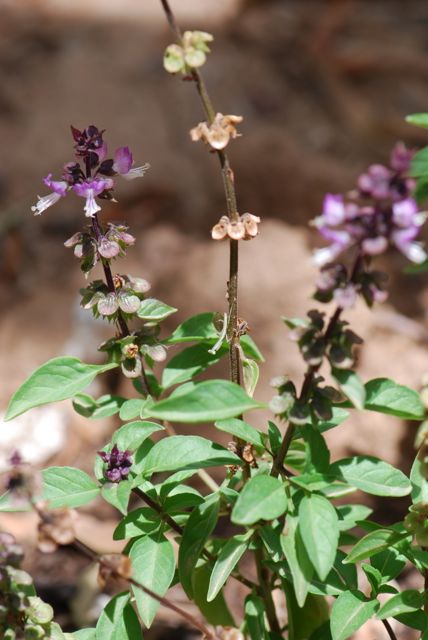Are you looking for activities that the whole family can take part in? Then consider growing a theme garden. Not only will your children learn about plants, they will also learn about soil, water, weather, decomposition (ecology), wildlife, and many other aspects of the natural world, while they sharpen their observation skills. They will benefit from the opportunity to play outside and get some healthy exercise, too. And, with any luck, you can all eat the results of your efforts.
Theme gardens can inspire you to try new things and children love them. To get you inspired, here are some popular children’s garden themes:
1. ABC garden: Can you find a flower or vegetable to represent every letter of the alphabet? Plan the garden in the shape of letters. Make letter signs out of craft sticks to mark each plant. Make letters out of recycled materials (junk) to decorate the garden. Don’t forget to plant bulbs for spring color, too.
A is for Artichoke
2. Rainbow gardens add color and can be planted in a rainbow shape. Try to find unusually colored vegetables, like yellow beets and blue potatoes. Or pick one color and find plants to make a single-colored patch. Do you have an artist in the family? Then you have to try a color wheel garden.
3. Animal gardens can go way beyond the traditional butterfly or pollinator garden idea. Have your children pick an animal, from an antelope to a water buffalo, ant to zebra finch. Research what the animal eats and then grow some of those plants. Choosing local animals will ensure success because you can find local plants more easily, but creative substitutions can make an exotic animal garden fun too. Ever tried growing peanuts for an elephant garden?
Sunflowers are favorite food of many animals.
4. Food themes are enjoyable for gardens. Try a salsa, soup, herb or pizza garden. Herbs are often easy to grow and add another dimension to the garden through odors and textures.
Thai basil is a pretty plant that smells and tastes good, too.
5. Pick a favorite story or book that talks about vegetables or other plants and then try growing some of them. The Bible is a traditional favorite, but many books lend themselves to be garden themes.
Miss Rumphius grew lupines.
6. Research your heritage and plant some of the plants from your ancestors’ culture or cultures. Or pick a culture you have been studying. Growing and eating plants of a given culture makes the learning experience many times richer.
7. Use plants to make forts, huts, and other places to hide. Tall plants, such as hollyhocks and sunflowers are easy to grow under a variety of conditions. Building a structure and covering it with vines is another option.
We recently saw a number of great theme gardens at the National Arboretum. Some of them might not be as appropriate for small children, but older kids are likely to be interested in plants used for dyes, medicinal plants and plants that produce materials used in industry.
When it comes to developing a theme garden, all you need is your imagination. Have fun!
Visit our growing list of children’s books to accompany theme gardens at Science Books for Kids.
Do you have any ideas for theme gardens? Or children’s books to accompany theme gardens? We’d love to hear them.










Leave a Reply